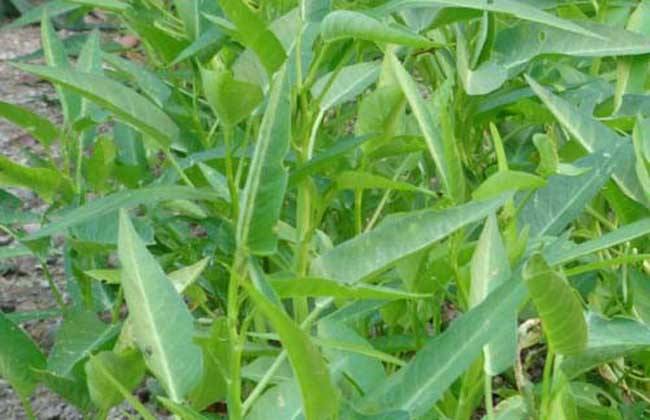Key points of Seedling raising techniques of Ipomoea aquatica
Asparagus is very common in our daily life, has a very large planting area in the southern provinces, is a common vegetable. When planting asparagus, there are generally two methods: seedling transplanting and field direct seeding. In order to increase the yield of asparagus, now most of them are seedlings and transplanting. So how to raise seedlings of asparagus? The following editor brings you the key points of raising seedlings of asparagus. Let's take a look at it.

1. Select superior species
Before raising seedlings of asparagus, we should first choose the appropriate variety according to the planting pattern of asparagus. For example, if it is cultivated in a greenhouse, then the varieties suitable for planting are green leaves and white shells, Nanchang hollow vegetables and so on. Among them, the growth ability of green leaf and white shell is very strong, it can produce more lateral roots, the color is mainly bluish white, and it has obvious leaf veins. it is a kind of hollow vegetable variety with good quality, which is very suitable for cultivation in dry land. When selecting seeds, it is necessary to give priority to full, bright and high germination percentage seeds to ensure the yield of hollow vegetables.
2. Seed treatment
After selecting the seeds, we have to do a good job in the treatment of the seeds. First of all, we use metalaxyl and other agents to mix seeds, so as to eliminate the bacteria on the seeds and carry out disinfection work. The seed coat of hollow cabbage seeds is relatively thick and hard, if you do not deal with direct sowing, then because the temperature is too low, it will lead to slow germination or even rotten seeds do not germinate. So we have to soak the seeds in warm water of about 55 degrees for about half an hour. Then soak it in clean water for a day, remove it and wash it at 25 degrees Celsius for sprouting. When sprouting, keep the seeds in a moist environment, wash them once a day, and sow when more than half of the seeds are white.
3. Cultivate strong seedlings
Asparagus can not only be direct seeded in the field, but also can be raised and transplanted. However, in order to improve the yield of asparagus and the utilization rate of facilities, it is best to use the method of seedling transplanting. Seedling transplanting is mainly cultivated in solar greenhouse, and the sowing amount of one mu should be controlled at about 5 jin. Then, after sprouting, sow the seeds directly in the soil. Control the temperature after sowing, the temperature should be controlled at about 30 pairs during the day and 15 degrees at night. After the seeds were unearthed for about a week, the temperature decreased about 5 degrees during the day, and the soil could be kept dry and wet.
4. Fertilization and planting
Before transplanting, we should first choose a plot with high topography, strong drainage and irrigation capacity and ventilation as the planting field. Because the growth speed of asparagus is relatively fast, has a strong branching ability, the demand for fertilizer and water is relatively large. Therefore, we should pay attention to the application of sufficient base fertilizer, which is mainly based on rotten farm manure, combined with an appropriate amount of plant ash, and then fully mixed with the soil, ridging to make the border. When the seedlings of asparagus grow to about 20cm, they can be planted. A border about one meter wide is planted in about three rows, and the distance between holes is kept at about 35cm.
The above is a brief introduction to the main technical points of raising seedlings of asparagus. That's all for today's introduction. This article is for reference only. I hope it can help you all.
Related
- Where is it suitable to grow horseradish in China? it is expected to see the middle altitude horseradish in Alishan.
- How to prevent tomato virus disease reasonably? (Control methods included)
- Many people like to plant towel gourd on the balcony. What are the main points of this method and management?
- What crops can chili peppers be mixed with?
- Fertilization techniques and matters needing attention in Tomato
- What are the grafting techniques for peach seedlings in spring?
- Harm and control methods of root swelling disease of Chinese cabbage
- What are the pests of sweet potatoes? How to prevent and cure it?
- Symptoms, causes and Control methods of navel Rot in Tomato
- The cause of "Cucumber rotten bibcock" in Farmers' planting Cucumber and its Control Plan



